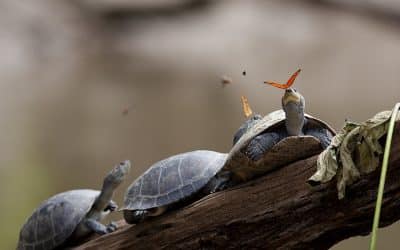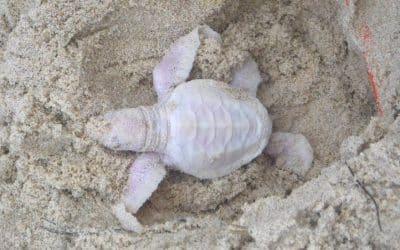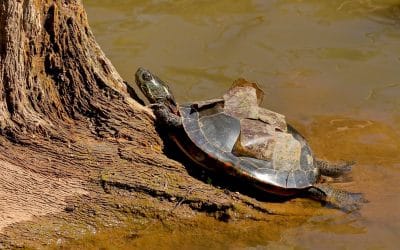Sea turtles are solitary marine creatures that remain submerged for most of their lives at sea which makes them a very difficult subject to study, hence many of their behaviour still remains undiscovered. It has been long known that marine turtles rely on the earth’s magnetic field to navigate the open ocean. Extensive research has been done by scientists to study why mature female sea turtles return to their birthplace to lay their eggs.
Researchers from the University of North Carolina who studied Loggerhead turtles have discovered that male and female turtles adopted different strategies for mating. This study has discovered that female turtles have natal homing behaviour that they always return to the exact spot where they were hatched to mate and lay their own eggs whereas the male turtles almost never return to the same beach once they leave the sand of their natal beach. Studies have also shown that female sea turtles can imprint or learn their home beach’s distinctive magnetic signatures upon birth through geomagnetic imprinting. Each coastline has its unique magnetic signatures that allows the turtles to remember and use as an internal compass in the future. This is how sea turtles use their magnetoreception* sense to migrate long distances (often several thousand kilometres) to their natal beach to reproduce.
Scientists have offered an explanation as to the behaviour of Loggerhead turtles returning to their birthplace. This is because the female turtles from different islands tend to have varied immune genes, suggesting that returning to their island of birth to breed is associated with the advantages in parasite resistance and diseases. Thereby, the parent turtles can pass down their genetic makeup to help young turtles fight off local parasites and diseases as well as to have a greater chance of survival. Scientists have discovered the major histocompatibility complex, which is a certain region in the turtles’ genome that plays an important role in fighting local parasite fauna and diseases that are present in that specific natal beach. It is very important to conserve every nesting colony as each singular location provides significant genetic adaptation for a higher survival chance of the whole population in terms of major biotic or abiotic changes in this changing global environment.
It is fascinating that sea turtles travel through the seemingly featureless open ocean through this vast expanse of nothing. Research also emphasise the importance for turtle conservation to conserve and protect natal beaches of sea turtles. For example, reducing and controlling oil- and marine pollution; controlling the over harvesting of turtle meat; replacing artificial lighting to turtle-safe lights; and minimising magnetic interference and coastal development on natal beaches so that the female turtles are able to return to their home to nest.
*Magnetoreception (also magnetoception) is a sense which allows an organism to detect a magnetic field to perceive direction, altitude or location.
References:
- Sandle, T. (2013). Why do female Sea Turtles return to their place of birth? Retrieved 15 March 2021. Link.
- Scale, H. (n.d.). How do sea turtles remember what beach they were born on? Retrieved 15 March 2021. Link.
- Weintraub, K. (2018). Sea turtles use magnetic fields to find their birthplace beach. Retrieved 18 March 2021. Link.
- Arnold, C. (2015). How Do Sea Turtles Find the Exact Beach Where They Were Born? Retrieved 18 March 2021. Link..
- Georgieva, B. (2020). Sea turtles returning home. Retrieved 18 March 2021. Link.
- Helmholtz Centre for Ocean Research Kiel (GEOMAR). (2013). Why female loggerhead sea turtles always return to their place of birth. Retrieved 18 March 2021. Link..




